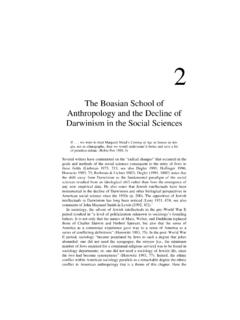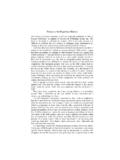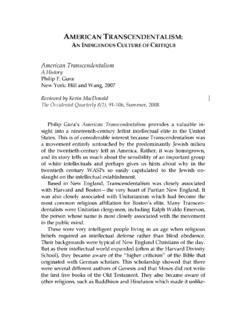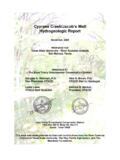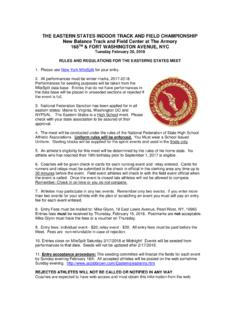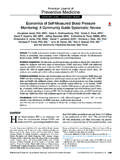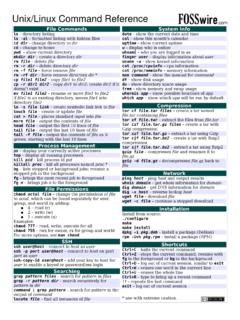Transcription of They Knew They Were Right - Kevin B. MacDonald
1 THE NEOCONSERVATIVE MIND they knew they were Right The Rise of the Neocons jacob Heilbrunn New York: Doubleday, 2008 Reviewed by Kevin MacDonald By now the history of the neoconservative movement is a bit of a twice-told tale. There have been book-length academic treatments and substantial coverage in the media, especially as the influence of the neocons in the George W. Bush Administration and in promoting the war in Iraq came to be public knowledge. Those with some familiarity with this history will find that Heilbrunn s treatment adds little to available accounts. But what it does better than other mainstream me-dia accounts is to really get at the Jewish nexus of the movement. This in itself is a major accomplishment because mainstream ac-counts of neoconservatism routinely ignore the Jewish origins and composition of the movement. Or they dismiss any discussion of Jew-ish identities and Jewish interests that are so central to neoconservat-ism as the ravings of anti-Semites.
2 Heilbrunn is quite clear about the role of Jewishness in neoconser-vatism. After dismissing other views of what neoconservatism is, he states flatly that neoconservatism is about a mind set, one that has been decisively shaped by the Jewish immigrant experience, by the Holocaust, and by the twentieth-century struggle against totalitarian-ism (p. 10). Indeed, as much as they may deny it, neoconservatism is in a decisive respect a Jewish phenomenon, reflecting a subset of Jewish concerns (p. 11). THE PSYCHOLOGICAL MILIEU OF NEOCONSERVATISM But Heilbrunn goes beyond simply recording the Jewish identities and interests that form the backbone of neoconservatism. He gets at the psychological milieu of neoconservatism, and in this regard I do think he makes a genuine contribution to our understanding of Jewish intellectual and political movements. The Occidental Quarterly, vol. 8, no. 3, Fall 2008 2 Psychological Intensity, Anti-White Hostility The title of the book they knew they were Right says a great deal.
3 As Heilbrunn shows, the neocons are people of an uncompro-mising temperament who use (and treat) ideas as weapons in a moral struggle (p. 13). He gets at the passion of Jewish involvement in po-litical causes, tracing it back to traditional Jewish attitudes in Eastern Europe: As one Yiddish newspaper put it, with hatred, with a three-fold curse, we must weave the shroud for the Russian autocratic gov-ernment, for the entire anti-Semitic criminal gang (p. 25). Regarding Max Shachtman, an early neocon follower of Trotsky, his father transmitted his hatred of the Russian, German, and Austro-Hungarian empires to him (p. 29). The proto-neocons of the 1930s reveled in their hatred of capitalism and their snobbish alienation from Ameri-can society (p. 43). When George H. W. Bush became president, the eastern establishment Republicans brought in by Bush, men like James Baker and Brent Skowcroft, represented everything the neocons despised (p. 194). These quotes reflect two themes I have stressed in a previous TOQ essay on background traits for Jewish activism: Psychological intensi-ty and the motivating force of hatred of the existing social order as There are many passages where he mentions the psycho-logical intensity of the neocons.
4 For example, neocons always believe what they are saying with the utmost intensity; it s in their nature as prophetic personalities (p. 137). And a prime passion is hatred of their enemies. Indeed, he contrasts William Buckley with the passio-nate intensity of Norman Podhoretz: The contrast with a Tory conservative such as William F. Buck-ley Jr. is striking. Buckley didn t have ex-friends. He never saw political differences as tantamount to personal betrayal. He was best friends, for example, with the legendary journalist Murray Kempton, who was at the other end of the political pole. This is not necessarily to Podhoretz s discredit. There is something to be said for the almost willful, na ve ferocity of his political passions. (p. 77) 1 Kevin MacDonald , Background Traits for Jewish Activism, in Cultural Insur-rections: Essays on Western Civilization, Jewish Influence, and Anti-Semitism (Atlanta: The Occidental Press, 2007).
5 MacDonald , Title 3 Surprisingly perhaps in a group of self-styled conservatives, Heil-brunn repeatedly states that a major target of hatred for the Jewish neocons was WASP political power and cultural influence. He finds that the neocons were motivated partly by antipathy to the social ex-clusion and WASP snobbery that their fathers experienced in the early part of the twentieth century an attitude they carried with them through the debates of the cold war and into the halls of power after 9/11 (pp. 11 12). Even their Anglophilia was motivated by their view that the British aristocracy had been less anti-Jewish than the American WASPs: The neoconservatives would play a surprising role in propagating nostalgia for the English aristocracy, supposed by them to be a kind of benign ceremonial caste that might have been stuffy and hidebound but had never frozen out the Jews the way the WASPs back home had (p. 58). The WASPs in the State Department were a particular focus of their ire.
6 A quote from Douglas Feith is telling: Feith told me in an inter-view that because of his family history [ , decimated by the Holo-caust] he understands the true nature of foreign policy, unlike the WASPs in the State Department (p. 12). Feith sees foreign policy from a Jewish, Holocaust-centric perspective that the WASPs can nev-er understand. He was at the center of power during recent American history, but he sees himself as an outsider, his enemies the evil WASPs whose fathers didn t allow Jews into their country clubs. The WASPs in the State Department assume an almost legendary role in the demonology of neoconservatism consigned to the lowest reaches of hell. Their unforgiveable sin was to fail to see the world fundamentally in terms of Jewish interests, beginning with their op-position to recognizing Israel during the Truman administration. As Howard Sachar notes in his history of Jews in America, Truman s de-fense secretary, James Forrestal, was all but obsessed by the threat to [American interests] he discerned in Zionist ambitions.
7 His concern was shared by the State Department and specifically by the Near East Desk. 2 George Ball, whose co-authored 1992 book, The Passionate At-tachment,3 was critical of Israel and the Israel lobby, is the prototype of this hated State Department WASP. (Notice that the title of Ball s ex-cellent book reflects the theme of psychological intensity among pro- 2 H. M. Sachar, A History of Jews in America (New York: Alfred A. Knopf, 1992), 597. 3 G. Ball and D. Ball, The Passionate Attachment: America s Involvement with Israel, 1947 to the Present (New York: W. W. Norton, 1992). The Occidental Quarterly, vol. 8, no. 3, Fall 2008 4 Israel partisans.) Like their radical cousins, the early neocons sought: .. to overturn the old order in America.. After all, no matter how hard they worked, there were still quotas at the Ivy League universities. Then there were the fancy clubs, the legal and fi-nancial firms that saw Jews as interlopers who would soil their proud escutcheons and were to be kept at bay.
8 Smarting with unsurpassed social resentment, the young Jews viewed them-selves as liberators, proclaiming a new faith. (p. 28) Heilbrunn mentions the snobbery of the Columbia English depart-ment, where Jews were seen as cultural interlopers. This attitude, which also prevailed on Wall Street and at the State Department, pro-duced a lifelong antipathy toward the patrician class among the neo-cons and prompted them to create their own parallel establishment (p. 73). The result, as Norman Podhoretz phrased it, was to proclaim a war against the WASP patriciate (p. 83). The psychological fanaticism of the neocons made them inflexible, but only to a point. they refused to acknowledge the changes in the USSR brought about by Michael Gorbachev, while Reagan happily made an about face and embraced the changes as genuine. Neverthe-less, the neocons rapidly regrouped and spearheaded the idea that the United States as the world s only superpower should aggressively pursue an agenda of remaking the Muslim world and preventing any other power from threatening its status.
9 Moral Posturing and Double Standards Heilbrunn also notes the tendency for neocons to frame issues in moral terms a theme that is prominent in my writing on Jewish in-tellectual movements When Podhoretz became editor of Commentary, he greeted the New Left with enthusiasm: This left movement will be a moral criticism of all existing social institutions (p. 78). The neocons, while decamping from the far left, never strayed from framing issues in moral terms. 4 Kevin MacDonald , The Culture of Critique: An Evolutionary Analysis of Jewish In-volvement in Twentieth-Century Intellectual and Political Movements (Westport, Conn.: Praeger, 1998; paperback ed.: Bloomington, Ind.: 1stBooks Library, 2002), ch. 6. MacDonald , Title 5 Nevertheless, they have never allowed themselves to be swayed by moral crusades that are against their interests. The prime example of this is the demonization of Jimmy Carter. Carter s emphasis on hu-man rights and his appointment of Andrew Young as UN Ambassa-dor infuriated the neocons because Carter had the temerity to see the Palestinians grievances against Israel in moral terms.
10 Carter has con-tinued his moral criticism of Israel, most recently with his book, Pales-tine: Peace Not Apartheid. He is routinely labeled an anti-Semite by the neocons and other activist Jews. Perhaps the most rabid example of this rather extensive genre is Jimmy Carter s War against the Jews, writ-ten by jacob Laskin and produced by the David Horowitz Freedom On the other hand, using moral arguments against the USSR be-came stock-in-trade for the neocons. And after the fall of the USSR, they shifted smoothly to framing the proper role for US foreign policy in the Middle East as a moral crusade for democracy and human rights in the Muslim world. This double standard on moral crusades is also reflected in neo-cons support for the war against Serbia. While Israel s expansion of its territory is enshrined as a moral imperative and while many of the neocons ( , Douglas Feith) have close associations with the settler movement in Israel, the neocons supported the use of force against Serbia s attempt to retain its historic territory against the invading Ko-sovars (p.)
